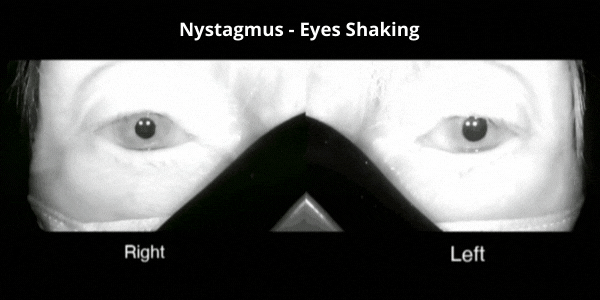Don’t worry we haven’t gone crazy!
These are Infrared goggles (sometimes called Frenzel goggles or officially called Infrared Video Oculography) and we use them for part of our vestibular assessments. With a vestibular problem, there are often abnormal involuntary eye movements that occur. When you put the goggles on we can have a better look at your eye movements which give us a ton of information about where your vestibular dysfunction may be stemming from. The pattern of the eye movement that we can see with the goggles will let us know if it is coming from your inner ear or if it’s from a different area like your brain or central nervous system.

Why do we use Infrared Goggles?
- This allows a more accurate assessment and consequently diagnosis of vestibular issues
- Allows differentiation between a central nervous system disorder or an inner ear problem
- Allows eye movement to be viewed in the dark to fully assess the vestibular system.
- Allows a more accurate diagnosis which means the right, effective treatment can be implemented
Why do we want to look at your eyes in the dark?
When you have the goggles on, it is completely dark and therefore your visual fixation is removed and you can’t focus on anything. The infrared camera inside the goggles allows us to see your eyes through video images on a computer screen while we do specific tests.
We also use the goggles in your treatment! To treat vestibular issues, sometimes we perform a series of movements with your head and body. If you are wearing the goggles while we do these we can ensure that the maneuvers are working as we should see a reduction in the involuntary eye movements.
We can also record your eye movements so we can review what we have observed and compare recordings over time to monitor changes. These videos also allow you to see what we have observed during the assessment and can help you and your family better understand your condition and treatment.
Disorders that Infrared Goggles can be used for:
- Benign Paroxysmal Positional Vertigo (BPPV) – vertigo caused by crystals out of place in the inner ear
- Meniere’s Disease – vertigo, tinnitus (ringing in ears) and hearing loss due to intermittent swelling in the inner ear
- Vestibular Neuritis or Labyrinthitis – dizziness and/or hearing loss due to inner ear infection
- Acoustic Neuroma – tumor affecting the acoustic (hearing) and vestibular nerves
- Post stroke – brain related cause of dizziness
- Visual Vertigo – dizziness provoked from visually complex patterns in the environment
- Post-Concussion syndrome (PCS) – caused by trauma to brain
- Vestibular migraine – migraine associated vertigo
- Motion sensitivity – nausea or dizziness caused by self-motion in the environment
Remember: Infrared Goggles are only one part of the assessment.
Infrared Goggles are just one tool in the toolbox. Effective vestibular physiotherapists know that a wide variety of clinical tests are necessary for an accurate vestibular assessment.
Not sure if a vestibular physiotherapy assessment with infrared goggles could help you? Give us a call today to book your appointment!
Read more about Vestibular Rehab Physiotherapy HERE.



